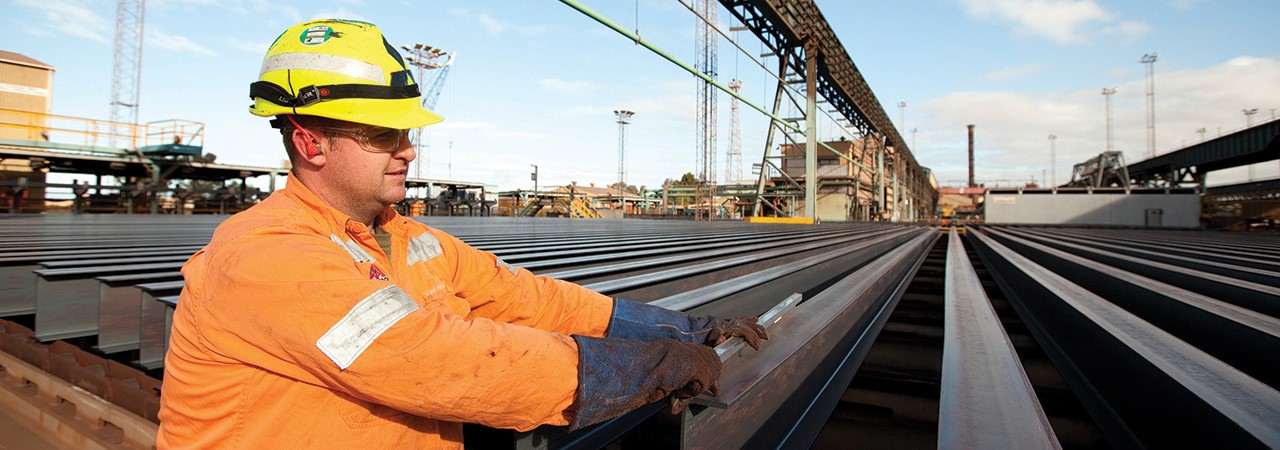
Australian Steel Industry Urged to Tell Our Story
(Originally appeared 24 October 2016)
When the Australian Steel Institute’s (ASI) CEO Tony Dixon wrapped up the 2016 Steel Convention in September in Melbourne, he left attendees with one key message – for the Australian steel industry to tell our story better.
Such a strong message we couldn’t ignore, so we caught up with Dixon after the Convention to ask him how he believes we can do this and what role the ASI can play in helping us achieve it.
“One of the things we do well as an industry is: ‘head down, bottom up – get on and do it’,” Dixon said.
“However, this means we don’t get our heads up often enough to understand the message that we send to our policy makers and the people who influence our future.
“In these times especially, we have to tell our story better – be united as an industry on the big issues and continue our open dialogue about the issues we collectively face so we can facilitate a sustainable way forward.”
The best vehicle for the industry to tell our story better is through the ASI, the peak steel industry association that covers the full spectrum of steel industry activity. The ASI’s national advocacy and influencing program is underpinned by its strategic imperatives to maximise local content, build robust supply chains through compliance of non-conforming product and grow steel intensity – things the industry struggles to do on its own in addition to day-to-day operations.
“Two of the ASI’s priorities are to focus on what we can we do to influence and grow the pie for steel and to make sure we get our fair share of that pie,” Dixon said.
“Our country’s policy makers need to be aware there are major distortions in the Australian marketplace and a hands-off approach is not the best way forward. We don’t want protectionism, just policy settings to be right around government procurement rules and the national compliance program.
“The state and federal governments are the leaders to help weather these issues and we must work together to be successful."
This year’s Steel Convention gave the industry plenty of ideas by sharing business case studies to articulate where the main areas of focus are moving ahead.
“There are tough times globally at the moment but as we work in a cyclical industry, we can see some improvement in trends over the coming years so it’s not all doom and gloom,” Dixon said.
What was evident from the presentations made at the Convention was that there are things we can do as an industry to improve how we deal with the challenges we face – have robustness in our strategies, our businesses and our policies.
“If there is any major fall-out from issues from the global economy moving forward, then we need to help our policy makers understand that the speed of response, in relation to anti-dumping legislation in particular, is going to be really critical to the industry,” Dixon said.
So if robust businesses unite to tell their collective stories better, is that all we need to do to maintain a sustainable steel industry into the future?
“For the industry to be sustainable we need to focus on innovating, on productivity and on running our businesses as best we can, but that’s not all,” Dixon said.
“Across Australia, and the east coast states in particular, there is substantial government investment in infrastructure coming up and that infrastructure is critical for the sustainability of our industry.
“The governments need to recognise the social and economic impacts of that infrastructure spend when they put the tenders together and by doing so, we will have a steel industry that we feel comfortable we can compete in.
“We must operate on a level playing field, ensuring infrastructure tenders are specified to the Australian Standard and that third-party certification is in place.”
Dixon shared with us what we can do right now to propel us forward to achieving these goals.
“The immediate answer to our problems is doing what we do every day a little bit better,” he said.
“Innovating, driving productivity, and continuing to push – the time to act is now and the first balls are in our court.
“Government work and advocacy is very important but it won’t take someone else doing our work to solve our problems. Although in parallel, take time to familiarise yourself with the ASI policy position in terms of government influencing and be active in communicating that with your local members.
The best way to connect with the ASI is through its network of state managers.

